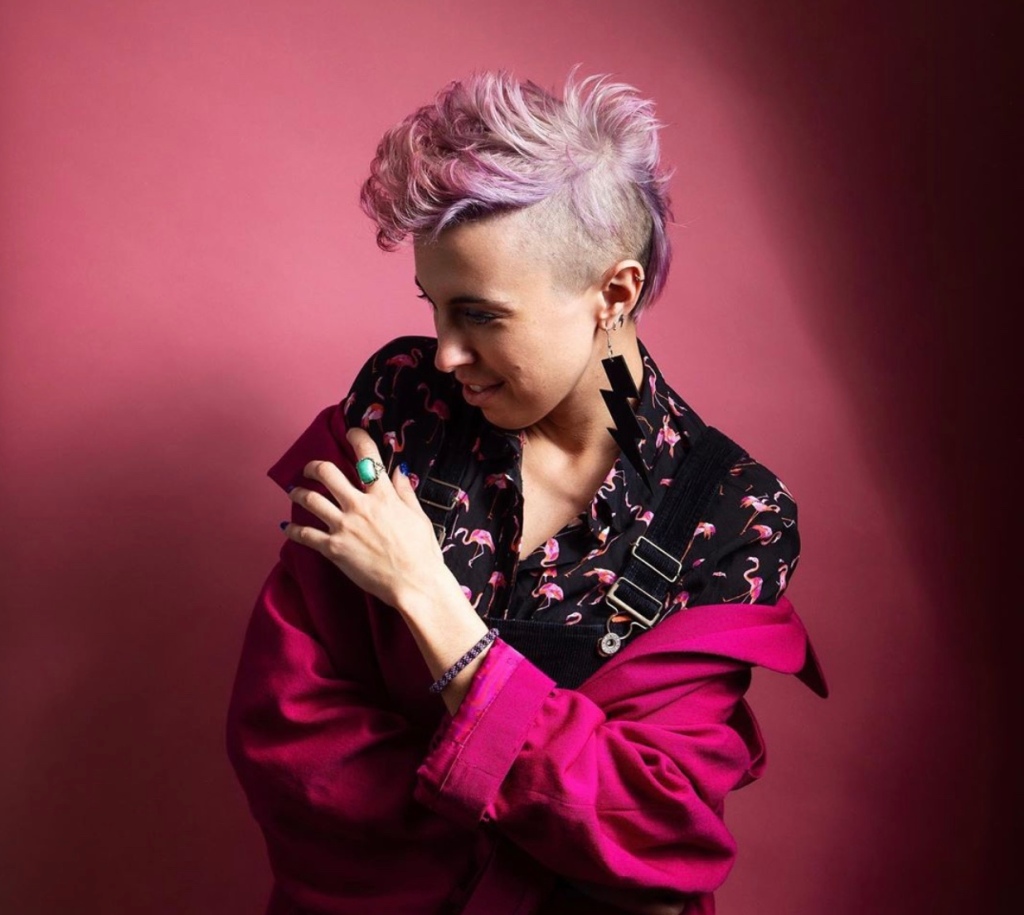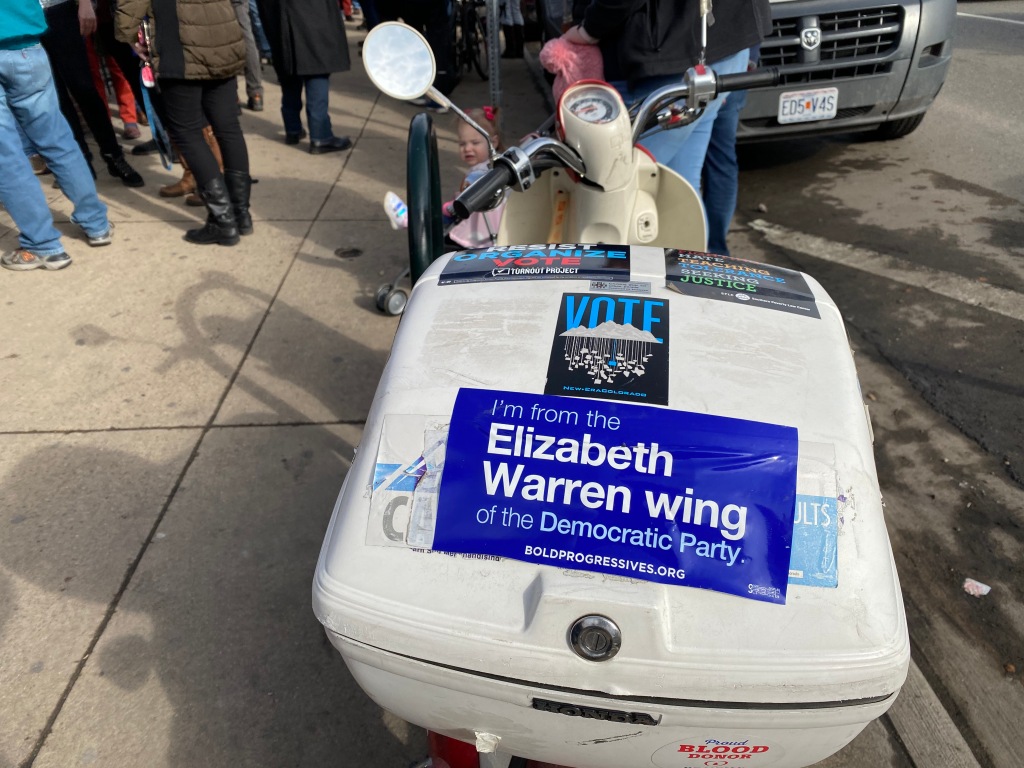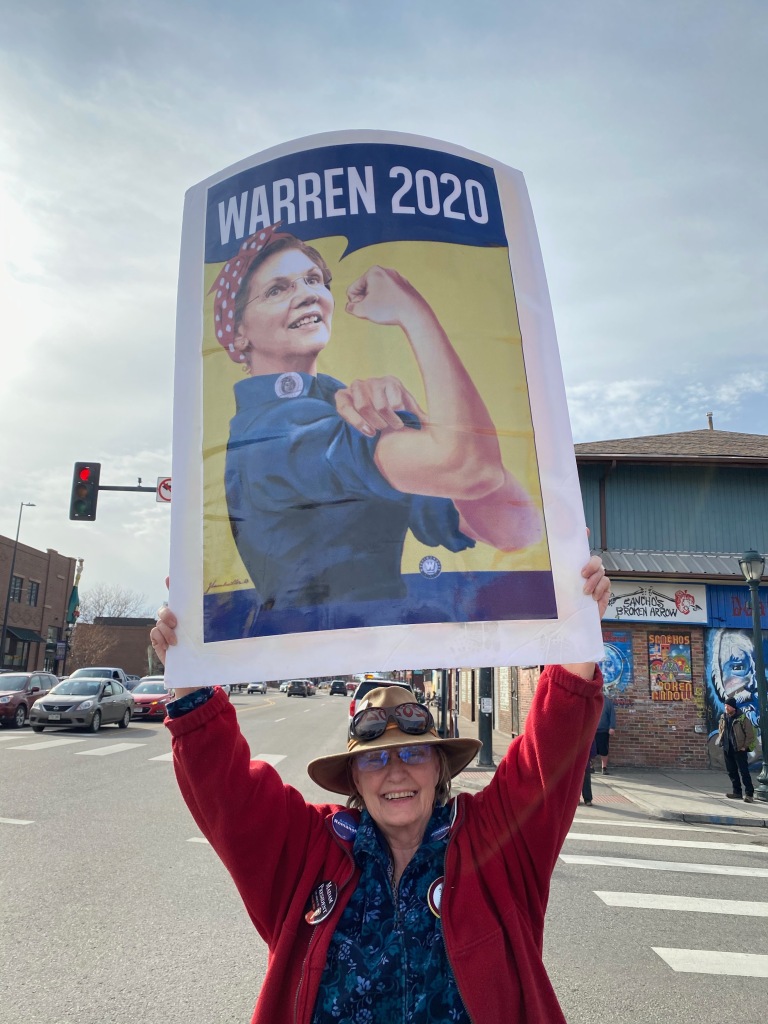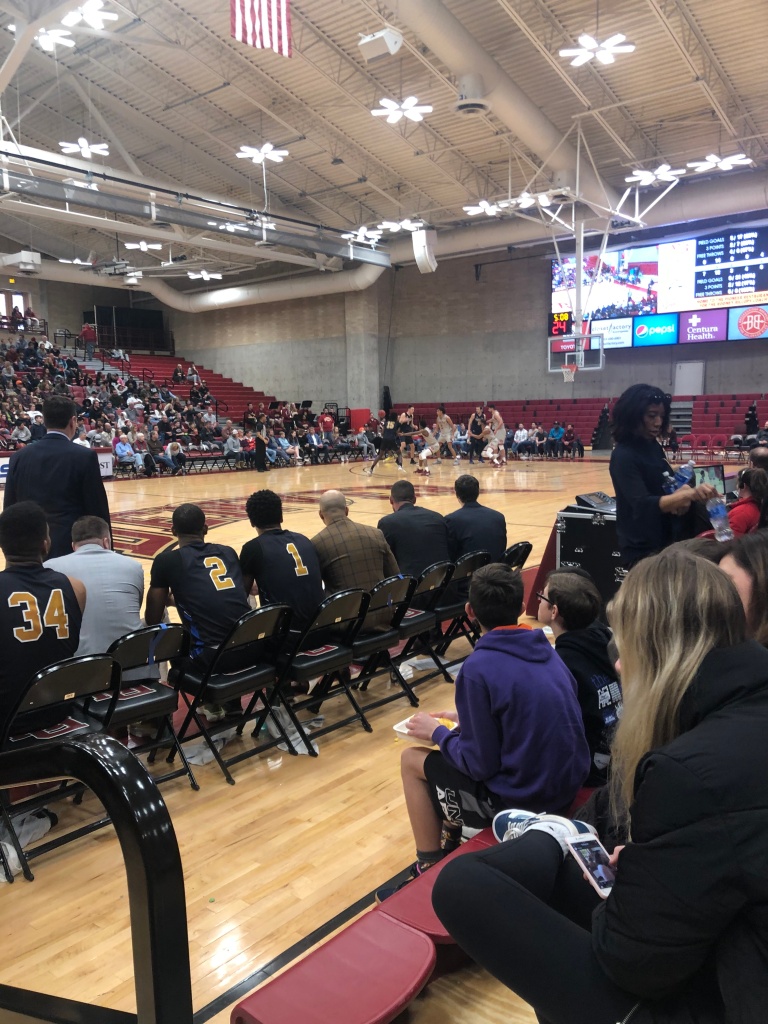If the last five years in Hollywood have the public anything, it’s that its run by men. The 2017 Times Up movement and rebirth of the 2006 Me Too movement shed light on the dark, unjust, and unequal side of the glamorously painted Hollywood we see in the media. Mainstream Hollywood cinema tends to regurgitate dominant societal stereotypes regarding gender and sex through plots, characters, portrayals of individuals. What we see on-screen reflects the society around us; the inequality and sexism women face in everyday life are very much is mirrored in films.

The most common role for female characters to play is the male protagonists’ love interest. Women are used as supports for the heroic male but are rarely portrayed as the hero themselves. Before the movie Moana in 2016, every Disney princess had some kind of male love interest. This male savior complex can be observed throughout mainstream Hollywood in films dating back to the birth of film making itself. Female characters are more likely to have their marital status known to the audience than male characters are, and are typically cast younger than men. Additionally, female characters’ core values in movies are generally focused on their personal relationships, in contrast to men who are goal-oriented, success, and work orientated. Due to this discrepancy, women are often cast as sexual objects with a lack of real purpose other than the male gaze. This over-sexualization leads to the importance of the character to be overshadowed and diminished by her gender. 2019 was a record-breaking year for women on-screen and off-screen, but the progress has been tedious and minimal. Last year revealed a myriad of inequalities on-screen, where women only accounted for 35% of characters, and men held 65% of speaking roles (LAUZEN2). When a group of people is underrepresented in the media, film, news, it causes a social culture of negativity and negligence to persist.
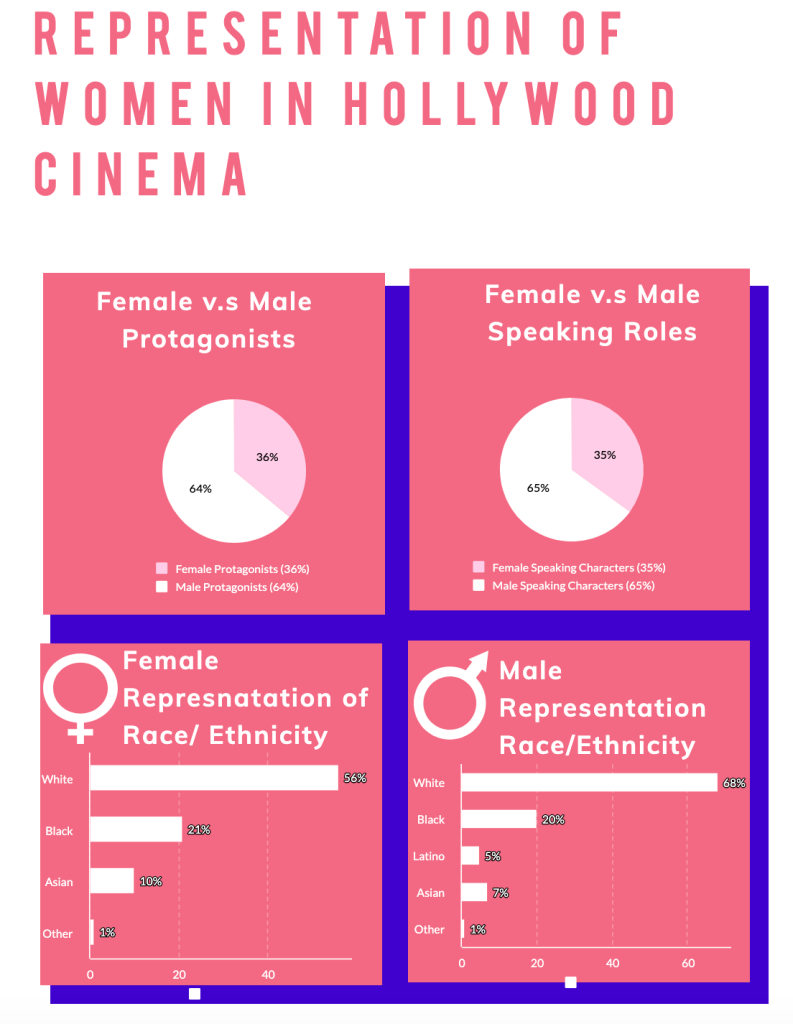
Sonia Kifferstein, a Junior Executive independent writer for Ron Bass in Los Angeles, said, “I’m both optimistic and frustrated at the potential for advancements women have seen in the film industry. On the one hand, portrayals of women have been vastly improving. We are seeing less stereotyping, rampant objectification (outside of Tarantino films at least), and the opportunity for more substantial roles than girlfriend or mother. Still, ageism and rigid beauty standards are hard to win out against unless you’re a legend Meryl Streep or the one female “character actor” the industry will accept per generation: Melissa McCarthy, Rebel Wilson, Beanie Feldman. The term in itself is fraught with issues. That’s before even diving into issues of race and sexuality/gender identity. Still, it’s improving. One of the most significant ways in which I’d say it’s improving may sound counterintuitive – we are letting women be FLAWED. Every development meeting I’d go into they’d say oh… she’s just not likable enough. From Elizabeth Warren to our sitcom leads, we’re still fighting to make women “likable.” Don Draper wasn’t likable, and neither was Walter White – I’d say we’re winning the battle to show 3D women, good, bad and human”.
Gender inequality in the film industry exists in front of and behind the camera. Men dominate positions such as directing, producing, editing, developing, writing, and acting, while women are underrepresented continuously and left out of the creation process. Yet, when cinema first arose at the end of the 18th-century women were involved in film making more than men were. It wasn’t until after World War I when entertainment became a societal norm than men took over the prospering industry. This lack of women causes movies to be created through a single lens; the male perspective. When movies are created solely by men, it inevitably makes for inaccurate and false representations of women on screen.
According to Dr. Martha M. Lauzens study “The Celluloid Ceiling: Behind-the-Scenes Employment of Women on the Top 100, 250, and 500 Films of 2019”; women compromised 13% of directors, 19% of writers, 21% of executive producers, 27% of producers, 23% of editors and 5% of cinematographers on the top-grossing films (LAUZEN3). These numbers have increased over the past decade by 3%, yet the progress is far from where it needs to be equal.
Female students are pursuing film majors at colleges and attending film schools at almost the same rates and numbers of male students. Conversly, the opportunities for female directors, editors, producers are scarce and very hard to come by. The next generation of female filmmakers is feeling the harsh reality of the gender inequalities of employment in Hollywood. Ally Larson a 2019 graduate from the University of Southern California School of Cinematic Arts is just one of many the young hopeful directors struggling as a woman to break into Hollywood film making.
“ Trying to be a director, let alone a female director in Hollywood, is difficult not only for the fact that its a freelance job but because of how exclusive it is. People want to work with established directors and are nervous about having anyone new to the scene, especially a woman work on a major Hollywood production. I have friends who are screenwriters and editors who have a slightly easier time finding jobs, but the opportunities are still slim. I’m hopeful about the future of women behind the scenes, but I also have to be realistic at the same time.
Junior executive Kifferstein who has been in the field for ten years accounted;
“Representation behind the scenes is a little more complicated. Things are improving, but the notion of tokenism still exists. I went to an agency for a meeting the other day, and 90% of the assistants were men, and only about 5% were people of color. This is discouraging. If men are the ones deciding what makes a good story, we aren’t going to get as many female stories as we need. Productions often hire a woman to fill a slot and then don’t really listen to their input. It’s not enough to just be in the room. It’s not a box you can check”.
It’s hard to say what the future of film making looks like for women, but the slow progress is still progress. Since cinema is a reflection of our world and how we view people, there is the likelihood that as women continue to try and break the glass ceiling, we will see more films made by women about real, powerful, heroic women.
Works Cited:
Lauzen, Martha M. “The Celluloid Ceiling: Behind-the-Scenes Employment of Women on the Top 100, 250, and 500 Films of 2019.
Lauzen, Martha M. “It’s a Man’s (Celluloid) World: Portrayals of Female Characters in the Top Grossing Films of 2018.”
Miller, Kara R. (2018) “A Sturdy Glass Ceiling: Representation of Women on Screen and Behind the Scenes of Hollywood’s Top 100 Films Throughout the Years,” The Journal of Purdue Undergraduate Research: Vol. 8, Article 5.
Nunez, Rocio, Jackson, John, Messaris, Paul, and Pearl, Sharrona. Woman with a Movie Camera: The Dearth of Women Filmmakers in Contemporary Hollywood (2015): ProQuest Dissertations and Theses. Web.
Image source:
